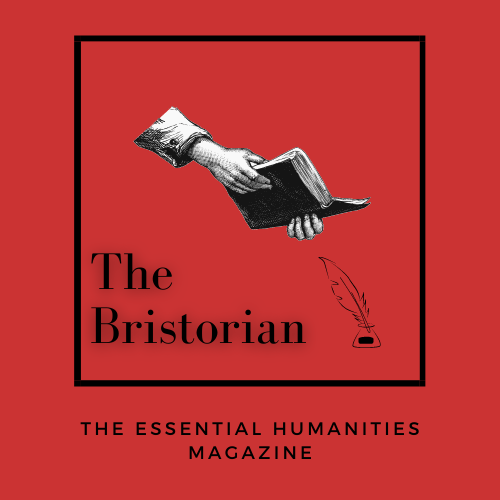Dressed for Resistance: The Black Panther Uniform
By Alice Peters, 3rd Year History
In 1966 in Oakland, California, Huey P. Newton and Bobby Seale founded the Black Panther Party for Self Defence (BPP). The Black Panthers have become emblematic of the Black Power movement, remembered for their celebration of Black nationalism, socialist programmes, and their militancy against police brutality through armed self-defence. But one of the most resonant physical manifestations of the Panthers’ politics was their uniform.
Figure 1: Black Panther protest outside Alameda Co. Court House, Oakland, California. Collection of the Smithsonian National Museum of African American History and Culture
Inspired by the beliefs of Malcolm X, the Black Panthers believed that the Civil Rights Movement had failed to liberate Black Americans from the state’s economic and cultural oppression. Instead, they adopted policies of self-determination and strategies for Black communities to achieve economic independence and self-sufficiency. Although the organization’s most urgent priority was to protect Black people from police brutality, it was their social reform policies which marked them as protectors of the community. Through ‘survival programs’ like the Free Food Program, Children’s Breakfast Program, and free health care clinics, the Panthers’ vision of reform became a striking presence in urban communities across the United States. Their iconic uniform was a powerful embodiment of this message of protection.
The uniform consisted of a black beret, a shirt or turtleneck, pins, dark sunglasses and a black leather jacket was worn too, particularly by male members. Every piece held a purpose and was strategically worn with military precision. The beret spoke to their militancy and unified commitment to revolution. Dark sunglasses helped conceal identities of members from increasing police surveillance – which became particularly necessary following FBI Director J. Edgar Hoover’s 1968 statement, condemning the Black Panthers as ‘the greatest threat to the internal security of the country’. The leather jacket, while less symbolic, offered convenience, durability, and warmth. Founders Newton and Seale agreed that ‘every young black man has a black leather jacket or can get one or can borrow one if they can’t buy one’. Together, the uniform created the visual rhetoric of one collective Black body to represent a unified force against oppression, protecting Black communities from within.
This uniform signalled the organization’s shift away from the polished image of the Civil Rights Movement. Civil Rights organizations, such as the NAACP, SCLC, and SNCC, all dressed in their ‘Sunday best’. This included suits, dresses, and straightened or close cropped hair, adhering to white beauty standards and what was considered ‘proper’. This look spoke to their desire to be treated with respect, but the Black Panthers felt it also signalled a willingness to assimilate into white society. In all forms, the Black Panthers rejected this approach, describing white society as ‘infectious’ or ‘sick’. They aimed to dismantle systemic racism, and therefore sought to subvert and challenge the institutions the Civil Rights groups were in conversation with.
By the late 1970s, the group’s membership had declined for a number of reasons, including harsh government repression, harassment and internal conflicts, which ultimately extinguished the momentum of the organization. However, its model of social reform and community activism lives on in Black activism today, with practices such as mutual aid programs and political education campaigns still being utilised by organisations such as Black Lives Matter.
The Panthers’ symbolic uniform has withstood the test of time. Individual aspects of the uniform have become embedded into mainstream fashion, despite their place in countercultural histories. The leather jacket, both a potent symbol of the Black Panthers and the 70s punk movement, is now commonplace in people’s wardrobes. The beret, which has a meaningful association with resistance and the military, has now come to be described by Vogue as ‘chic’, ‘‘romantic’ and ‘erudite’.
Figure 2: Beyoncé’s Super Bowl performance with dancers paying homage to the Black Panthers, 2016. Credit: BBC News
However, despite the integration of these pieces into popular fashion, once they are reunited again, their cultural significance is revived. As Fred Hampton, Deputy Chairman of the Illinois chapter of the Black Panther Party, stated ‘[there’s] power anywhere there’s people’. This is a testament to the enduring legacy of the uniform. In 2016, during Beyoncé’s Super Bowl performance, her dancers dressed in black leather and berets, paying homage to the Black Panther Party and their uniform fifty years after their formation. It is not only the lasting significance of the Black power movement that is celebrated today. The Black Panther values of self-defence were brought to the forefront of the American public consciousness due to a rise in modern-day police brutality, particularly following the brutal killing of Mario Woods, a Black man shot by San Francisco police in December 2015.
Whether it’s on stage at the Super Bowl, in an educational workshop for Black Lives Matter, or on the streets of Chicago fifty years ago, the Black Panther uniform and its symbolism remains alive and powerful.
Edited by Zoe Lambe


